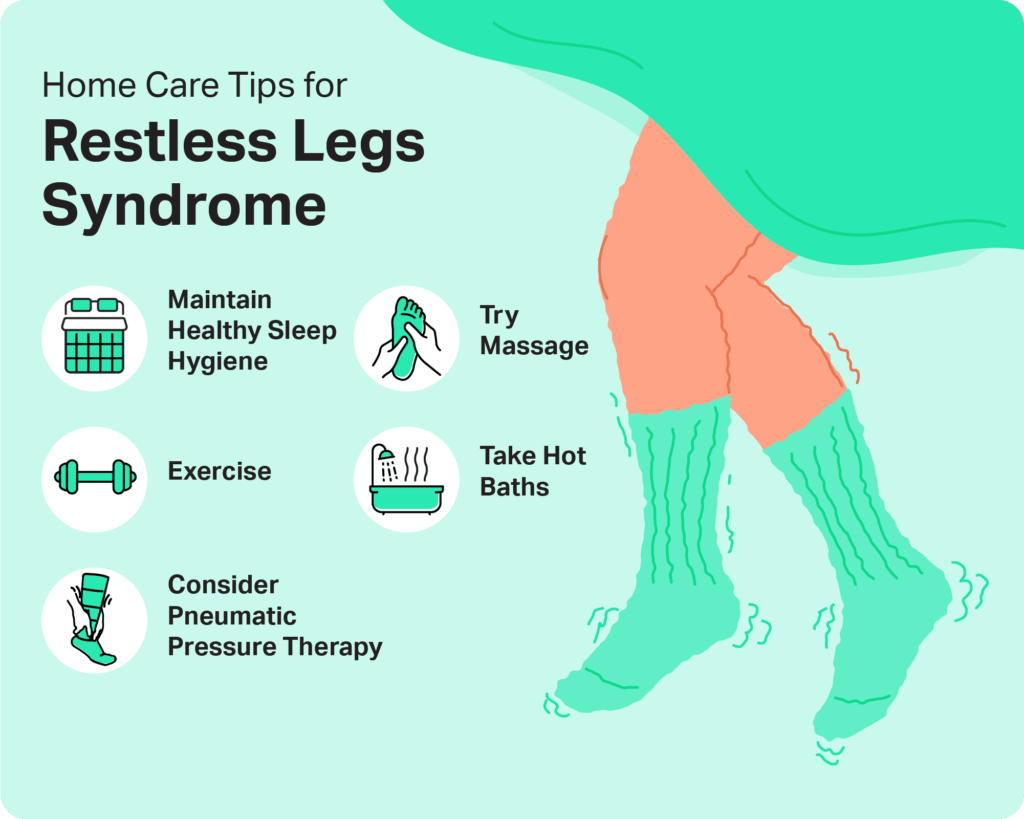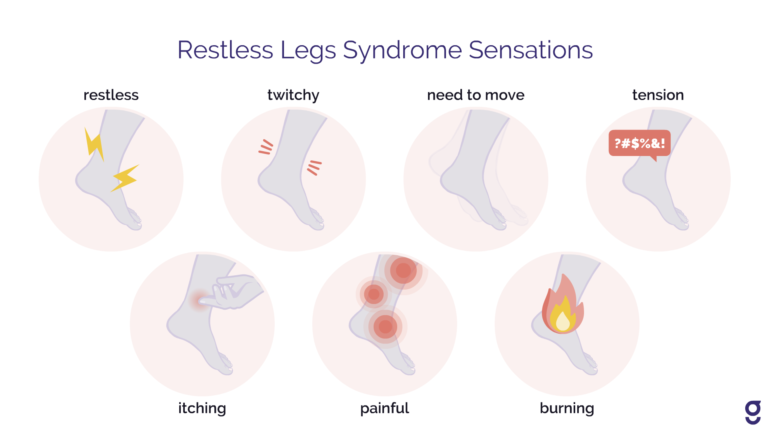Understanding Restless Leg Syndrome: A Comprehensive Guide

Are you struggling to get a good night’s sleep? Sleep disorders can have a significant impact on your health and overall well-being. Understanding Restless Leg Syndrome: A Comprehensive Guide aims to shed light on this particular disorder and provide helpful insights to those seeking a solution. At Vector Sleep Clinic, we understand the importance of uninterrupted sleep and offer trustworthy and reliable care to those suffering from restless leg syndrome and other sleep disorders. By uncovering the root causes of these issues, we can help you regain control over your sleep and improve your quality of life. Don’t let restless leg syndrome continue to disrupt your nights – let us help you unlock the magic of restful nights where dreams meet rejuvenation.
Understanding Restless Leg Syndrome: A Comprehensive Guide
Restless Leg Syndrome (RLS) is a neurological disorder that is characterized by an irresistible urge to move the legs, usually accompanied by uncomfortable sensations. This condition can significantly affect the quality of life, as it often disrupts sleep and causes discomfort during periods of inactivity. In this comprehensive guide, we will explore the causes, symptoms, diagnosis, and treatment options for Restless Leg Syndrome.
What is Restless Leg Syndrome?
Restless Leg Syndrome, also known as Willis-Ekbom Disease, is a disorder that primarily affects the legs but can also be experienced in the arms or other parts of the body. Individuals with RLS often describe an unpleasant sensation in the affected limbs, which is relieved by moving or stretching. These sensations are often described as tingling, crawling, or throbbing. The urge to move the legs can range from mild to severe and can occur during both wakefulness and sleep.
Prevalence and Incidence
Restless Leg Syndrome is a common condition, affecting approximately 7-10% of the population. It can occur at any age, although it is more common in middle-aged and older individuals. Women are more likely to be affected than men, and the prevalence of RLS tends to increase with age.
Types of Restless Leg Syndrome
There are two main types of Restless Leg Syndrome: primary and secondary. Primary RLS is thought to have a genetic component and often starts before the age of 40. Secondary RLS is usually associated with an underlying health condition, such as iron deficiency, pregnancy, kidney disease, or peripheral neuropathy.
Causes of Restless Leg Syndrome
The exact cause of Restless Leg Syndrome is still unknown. However, research suggests that both genetic and environmental factors play a role in its development.
Primary Causes of Restless Leg Syndrome
Primary Restless Leg Syndrome is believed to have a strong genetic component, with approximately 50% of affected individuals having a family history of the condition. Certain gene variants have been identified as contributing to the development of RLS, although further research is needed to fully understand the genetic mechanisms involved.
Secondary Causes of Restless Leg Syndrome
Secondary Restless Leg Syndrome is often associated with other underlying health conditions or lifestyle factors. Some common secondary causes include iron deficiency, pregnancy, kidney disease, peripheral neuropathy, certain medications, and chronic diseases such as diabetes and Parkinson’s disease.
Genetic Factors
As mentioned earlier, genetic factors can contribute to the development of RLS. Researchers have identified several gene variants that are associated with an increased risk of Restless Leg Syndrome. These gene variants are involved in the regulation of dopamine, a neurotransmitter that plays a crucial role in motor control.
Environmental Factors
In addition to genetic factors, certain environmental factors can trigger or exacerbate Restless Leg Syndrome symptoms. These factors include certain medications, such as antidepressants and antipsychotics, excessive caffeine or alcohol consumption, and sleep deprivation.
Symptoms of Restless Leg Syndrome
Restless Leg Syndrome is characterized by a range of symptoms that can vary in severity and frequency among individuals.
Common Symptoms of Restless Leg Syndrome
The most common symptoms of Restless Leg Syndrome include:
- A strong urge to move the legs or other affected limbs, often accompanied by uncomfortable sensations.
- Sensations described as tingling, crawling, itching, throbbing, or pulling in the affected limbs.
- Symptoms worsening during periods of inactivity or rest, particularly during the evening or at night.
- Relief from symptoms upon movement or stretching of the affected limbs.
Variations in Symptoms
While the typical symptoms of Restless Leg Syndrome are well-known, it is important to note that individuals may experience variations in their symptoms. Some individuals may also experience symptoms in their arms or other parts of the body, in addition to the legs.
Severity and Frequency of Symptoms
The severity and frequency of Restless Leg Syndrome symptoms can vary widely among individuals. Some individuals may experience mild symptoms that occur sporadically, while others may experience severe symptoms on a daily basis, significantly impacting their quality of life.
Diagnosing Restless Leg Syndrome
Diagnosing Restless Leg Syndrome can be challenging, as there are no specific tests or biomarkers that can definitively confirm the presence of the condition. Diagnosis is mainly based on the individual’s medical history, physical examination, and the presence of specific diagnostic criteria.
Medical History and Physical Examination
When evaluating a suspected case of Restless Leg Syndrome, healthcare professionals will start by taking a detailed medical history and conducting a thorough physical examination. They will ask about the individual’s symptoms, their frequency and duration, and any factors that worsen or alleviate the symptoms. A physical examination may help rule out other potential causes of the symptoms.
Diagnostic Criteria for Restless Leg Syndrome
The International Restless Leg Syndrome Study Group has established a set of diagnostic criteria to aid in the diagnosis of RLS. These criteria include the presence of an irresistible urge to move the limbs, discomfort relieved by movement, occurrence of symptoms primarily during periods of inactivity, and worsening of symptoms in the evening or at night.
Sleep Study and Polysomnography
In some cases, a sleep study may be recommended to evaluate the individual’s sleep patterns and assess any possible underlying sleep disorders. Polysomnography, a test performed during sleep, can measure brain activity, eye movements, heart rate, and other physiological parameters to detect disturbances that may be contributing to the Restless Leg Syndrome symptoms.
Differential Diagnosis of Restless Leg Syndrome
Restless Leg Syndrome shares some similarities with other conditions, such as peripheral neuropathy, nocturnal leg cramps, and akathisia. Healthcare professionals must consider these alternative diagnoses and rule them out before confirming a diagnosis of Restless Leg Syndrome.
Treatment Options for Restless Leg Syndrome
Restless Leg Syndrome is a chronic condition, but several treatment options are available to manage the symptoms and improve quality of life. Treatment approaches may involve lifestyle modifications, medications, iron supplementation, physical therapy, and alternative or complementary therapies.
Lifestyle Modifications
Making certain lifestyle changes can help alleviate Restless Leg Syndrome symptoms. These changes may include:
- Following good sleep hygiene practices, such as maintaining a regular sleep schedule and creating a sleep-friendly environment.
- Engaging in regular exercise and stretching, which can improve circulation and reduce symptom severity.
- Identifying and avoiding potential triggers, such as certain medications or substances that worsen symptoms.
- Practicing relaxation techniques, such as deep breathing exercises or progressive muscle relaxation.
- Exploring alternative therapies, such as yoga, meditation, or acupuncture, which may provide relief for some individuals.
Medications
In cases where lifestyle modifications alone are not sufficient to manage the symptoms, medications may be prescribed. Several different classes of medications can be used to treat Restless Leg Syndrome, depending on the individual’s specific symptoms and their response to treatment.
Iron Supplementation
Iron deficiency has been identified as a potential underlying cause of Restless Leg Syndrome in some individuals. In such cases, iron supplementation may be recommended to correct the deficiency and alleviate the symptoms. However, not all individuals with Restless Leg Syndrome have low iron levels, so iron supplementation may not be effective in every case.
Physical Therapy
Physical therapy techniques, such as massage, stretching exercises, and heat or cold therapy, can help relieve muscle tension and reduce Restless Leg Syndrome symptoms. A physical therapist can design a personalized treatment plan to target the specific needs of each individual.
Alternative and Complementary Therapies
Some individuals may find relief from Restless Leg Syndrome symptoms through alternative or complementary therapies. These may include practices like acupuncture, chiropractic care, herbal remedies, or the use of essential oils. While the effectiveness of these therapies may vary, they can provide an additional option for individuals seeking alternative approaches to manage their symptoms.
Medications for Restless Leg Syndrome
In cases where lifestyle modifications and non-pharmacological treatments are not sufficient, medications may be prescribed to manage the symptoms of Restless Leg Syndrome. Several different classes of medications have been found to be effective in reducing the intensity and frequency of symptoms.
Dopamine Agonists
Dopamine agonists are the most commonly prescribed medications for Restless Leg Syndrome. These medications work by increasing the levels of dopamine in the brain, which helps alleviate the symptoms. Commonly prescribed dopamine agonists include pramipexole, ropinirole, and rotigotine.
Benzodiazepines
Benzodiazepines, such as clonazepam, are another class of medications that can be used to treat Restless Leg Syndrome. These medications have sedative properties and can help improve sleep quality by reducing symptom severity. However, due to their potential for dependence and abuse, they are generally used as a second-line treatment option.
Opioids
In some cases, opioids may be prescribed to manage severe cases of Restless Leg Syndrome that do not respond to other treatments. These medications can provide relief from the symptoms but are typically reserved for short-term use due to the potential for dependence and other side effects.
Anticonvulsants
Certain anticonvulsant medications, such as gabapentin and pregabalin, have been found to be effective in reducing Restless Leg Syndrome symptoms. These medications work by modulating the activity of neurotransmitters in the brain and can be used as an alternative or adjunct to other treatment approaches.
Other Medications
In addition to the aforementioned medications, other medications, such as muscle relaxants or sleep aids, may be prescribed to manage specific symptoms or improve sleep quality. It is important to work closely with a healthcare professional to determine the most appropriate medication and dosage for individual needs.
Lifestyle Changes to Manage Restless Leg Syndrome
In addition to medical treatments, making certain lifestyle changes can help individuals manage their Restless Leg Syndrome symptoms and improve their overall quality of life.
Sleep Hygiene
Practicing good sleep hygiene is essential for individuals with Restless Leg Syndrome. This includes following a regular sleep schedule, creating a comfortable sleep environment, and avoiding stimulating activities or substances close to bedtime.
Exercise and Stretching
Regular exercise and stretching can help relieve muscle tension and reduce Restless Leg Syndrome symptoms. Engaging in activities such as walking, swimming, or yoga can be beneficial. However, it is important to avoid excessive exercise close to bedtime, as this may exacerbate symptoms.
Avoiding Triggers
Identifying and avoiding potential triggers can help reduce the frequency and severity of Restless Leg Syndrome symptoms. Some common triggers include caffeine, alcohol, nicotine, certain medications, and sleep deprivation. Keeping a journal or diary to track symptom patterns can be helpful in identifying specific triggers.
Relaxation Techniques
Practicing relaxation techniques, such as deep breathing exercises, progressive muscle relaxation, or guided imagery, can help reduce stress and promote relaxation. These techniques can be particularly beneficial before bedtime to promote better sleep.
Alternative Therapies
Exploring alternative therapies, such as yoga, meditation, acupuncture, or biofeedback, can provide additional relief for individuals with Restless Leg Syndrome. These therapies focus on promoting relaxation, reducing stress, and improving overall well-being.
Natural Remedies for Restless Leg Syndrome
In addition to traditional medical treatments, some individuals may choose to explore natural remedies to manage their Restless Leg Syndrome symptoms. It is important to note that while these remedies may provide relief for some individuals, their effectiveness may vary, and it is crucial to consult with a healthcare professional before trying any new treatment approach.
Dietary Changes
Making certain dietary modifications may help alleviate Restless Leg Syndrome symptoms for some individuals. A balanced diet that includes adequate amounts of essential nutrients, such as iron, magnesium, and vitamin D, may be beneficial. Avoiding excessive caffeine or alcohol consumption is also recommended, as these substances can worsen symptoms in some individuals.
Supplements
Some individuals may benefit from taking certain supplements to support Restless Leg Syndrome management. Iron supplements may be recommended for individuals with iron deficiency-related RLS, under the guidance of a healthcare professional. Magnesium and vitamin D supplements may also be considered, as deficiencies in these nutrients have been associated with increased RLS symptoms.
Herbal Remedies
Certain herbal remedies have been traditionally used to alleviate Restless Leg Syndrome symptoms. These may include herbs such as valerian, chamomile, or lavender. It is important to note that the effectiveness of herbal remedies may vary, and it is advisable to consult with a healthcare professional before using any herbal products.
Essential Oils
Some individuals find relief from Restless Leg Syndrome symptoms through the use of essential oils. Lavender, chamomile, and frankincense are among the essential oils that have been reported to promote relaxation and improve sleep quality. These oils can be diffused, applied topically, or added to a warm bath for a soothing effect.
Acupuncture
Acupuncture, a traditional Chinese medicine practice, involves the insertion of thin needles into specific points on the body. Some individuals have reported improvements in Restless Leg Syndrome symptoms after acupuncture treatments. However, more research is needed to determine the effectiveness of acupuncture as a treatment for RLS.
Complications and Risks of Restless Leg Syndrome
While Restless Leg Syndrome itself is not considered a life-threatening condition, it can have a significant impact on an individual’s quality of life. Chronic sleep deprivation and disrupted sleep patterns can lead to daytime fatigue, decreased cognitive function, and decreased productivity. Additionally, the discomfort and urge to move associated with RLS can cause anxiety and stress, further exacerbating sleep disturbances.
Support and Resources for Restless Leg Syndrome
Living with Restless Leg Syndrome can be challenging, but support and resources are available to help individuals manage their symptoms and find the necessary information and guidance.
Support Groups
Joining a support group can provide individuals with Restless Leg Syndrome an opportunity to connect with others who are going through similar experiences. Support groups offer a safe space to share experiences, discuss coping strategies, and provide emotional support.
Online Communities
Online communities and forums dedicated to Restless Leg Syndrome provide a platform for individuals to connect with others, ask questions, and share their experiences. These platforms can be particularly useful for individuals who may not have access to local support groups.
Books and Literature
There are several books and publications available that provide in-depth information about Restless Leg Syndrome. These resources can help individuals better understand the condition, its management, and coping strategies. Some recommended books include “Restless Legs Syndrome: Coping with Your Sleepless Nights” by Mark Buchfuhrer and “Clinical Management of Restless Legs Syndrome” by Lee Kinnear.
Educational Websites
Educational websites, such as those provided by sleep disorder organizations or healthcare institutions, offer comprehensive information about Restless Leg Syndrome. These websites often provide resources, articles, and research studies to help individuals stay informed and make informed decisions about their treatment options.
Professional Organizations
Professional organizations, such as the Restless Legs Syndrome Foundation, play a crucial role in advancing research and raising awareness about Restless Leg Syndrome. These organizations often provide resources, support, and educational materials for individuals with RLS and healthcare professionals alike.
In conclusion, Restless Leg Syndrome can have a significant impact on an individual’s quality of life, but with proper understanding and management, symptoms can be alleviated. By exploring the causes, symptoms, diagnosis, and treatment options outlined in this comprehensive guide, individuals with Restless Leg Syndrome can take proactive steps towards managing their condition and achieving restful nights of sleep. Remember, seeking guidance from healthcare professionals and accessing support and resources can help individuals navigate their journey with Restless Leg Syndrome more effectively and comfortably.





